Do you want to escape to the great outdoors but still remain comfy? Then you should know what is the Use of a Dome Tent.
Dome tents are best known for Comfort and Luxury. Dome tents, and especially the glamping ones, present the best possible option. Such tents are hard to miss as they offer plenty of light, high ceilings, large spaces, and even posh features. There is usually a bed and sofa, and even some models have attached bathrooms inside of the glamping dome tent.
What’s more, there is often a private terrace or patio included so that you can sip a drink and enjoy the views. You can choose to go camping but still have some degree of comfort and style, thanks to the dome tents, which are all the best camping equipment.
Want to know more? Readout this article, we will describe in detail what is the use of a dome tent, when to use it, and what the advantages and disadvantages are. So, be with us
What is a Dome Tent?
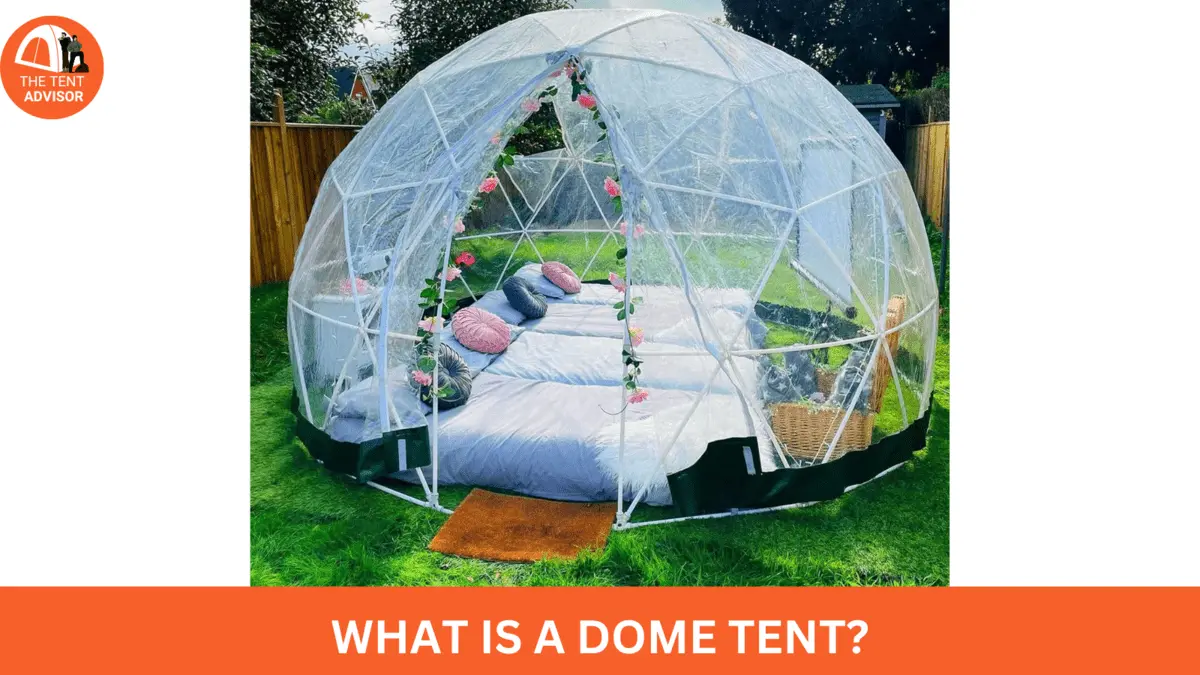
Think of a picture of going on a nature trip, where one gets to sleep on a nice bed, stand up without having to tremble with the cold, and sit at a table and eat without worrying about flies. This is the essence of glamping: a way of camping that is defined by hotel amenities and the outdoors. In view of such facilities, domes are quite popular among other forms of glamping. Let’s examine what is so special about dome tents and what activities they can be used for.
The Use of Dome Tents in Camping and Glamping
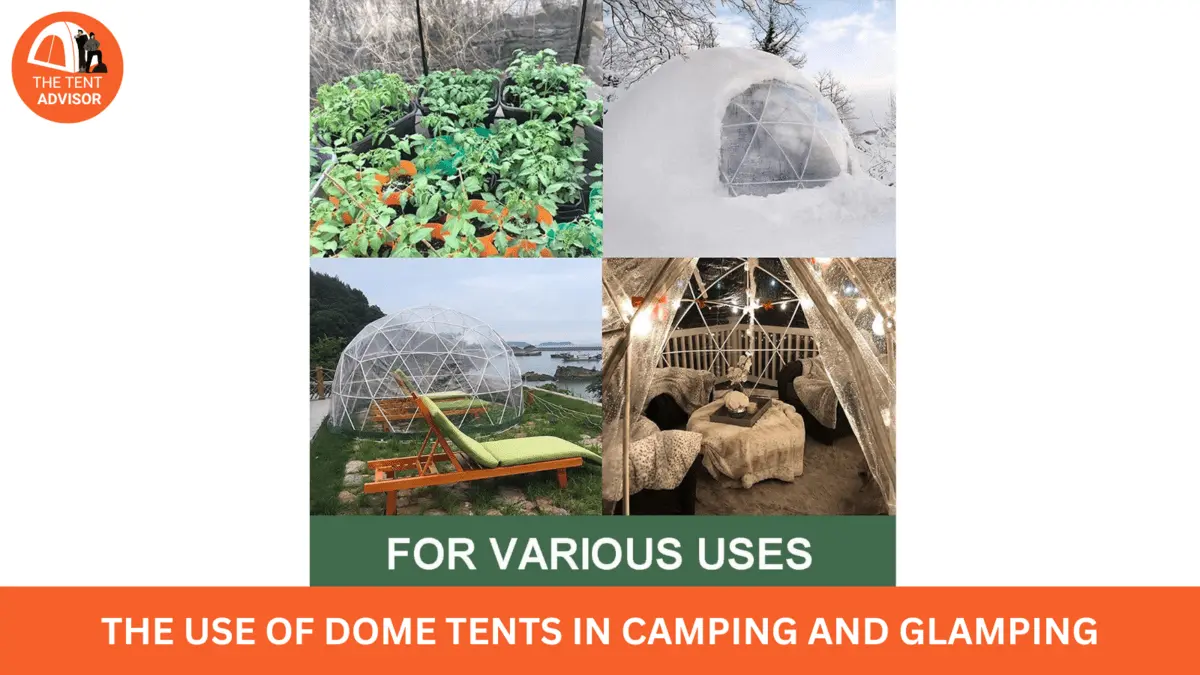
Dome tents have greatly advanced and are now particularly suited for many outdoor activities such as camping and the recently developed “glamping” concept. Here’s how dome tents are used in these settings and why they have become such a favored option:
Traditional Camping
In traditional camping, dome tents offer a practical and comfortable experience:
Erecting the Tent:
The same overall pattern achieved using a 2-pole dome tent automatically translates into fast and easy pitching. Most campers would find this aspect to be beneficial, especially those individuals who want to settle down quickly and comfortably.
Stability:
The shape of the dome provides substantial stability and is also able to withstand high wind pressures, which is necessary when considering a camping experience in any given weather conditions.
Ventilation:
It is common for dome tents to have mesh walls that serve the purpose of making airflow possible, thereby minimizing condensation within the walls.
Space efficiency:
Although dome tents are not the best in terms of spaciousness available, they are sufficient for an average-sized family or group, making them middle-leaning options for users who want something between space and portability.
Glamping Camping
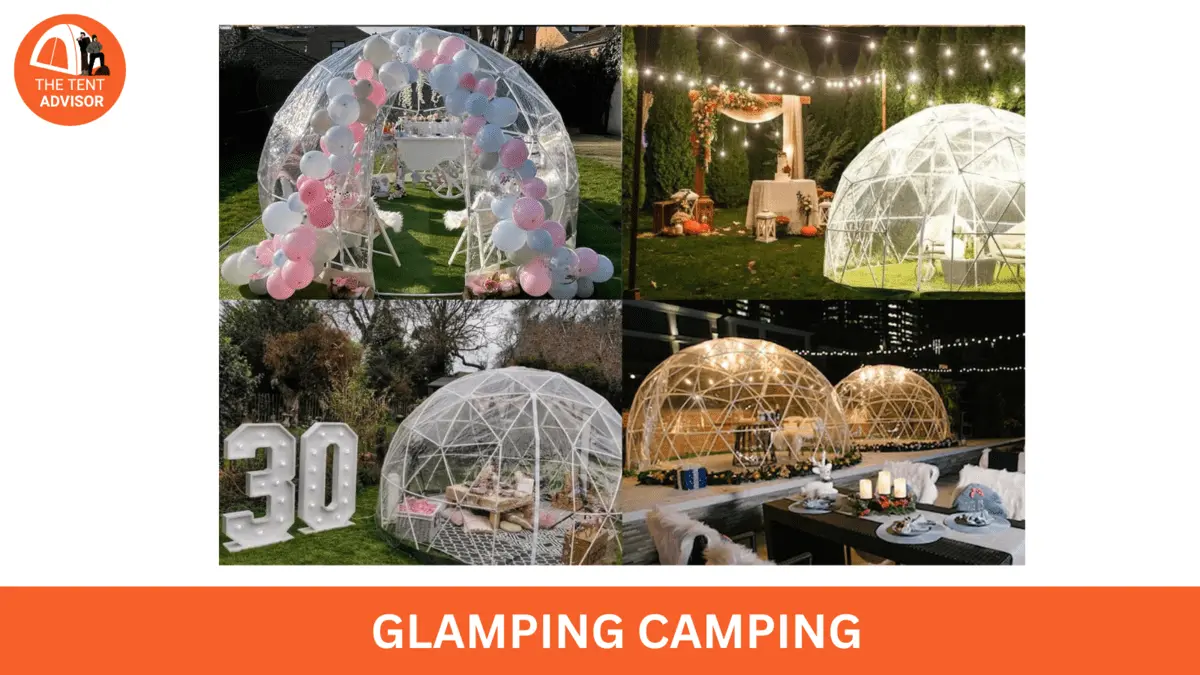
These particular dome shaped tents are employed under the context of “glamping” — merging glamour and camping with added elegance to the context:
Comfort and Luxury:
The glamping dome is usually fitted with luxury beds, adequate upholstery, and even bathrooms. It’s like staying in a class hotel but with an outdoor lifestyle.
Design and Aesthetics:
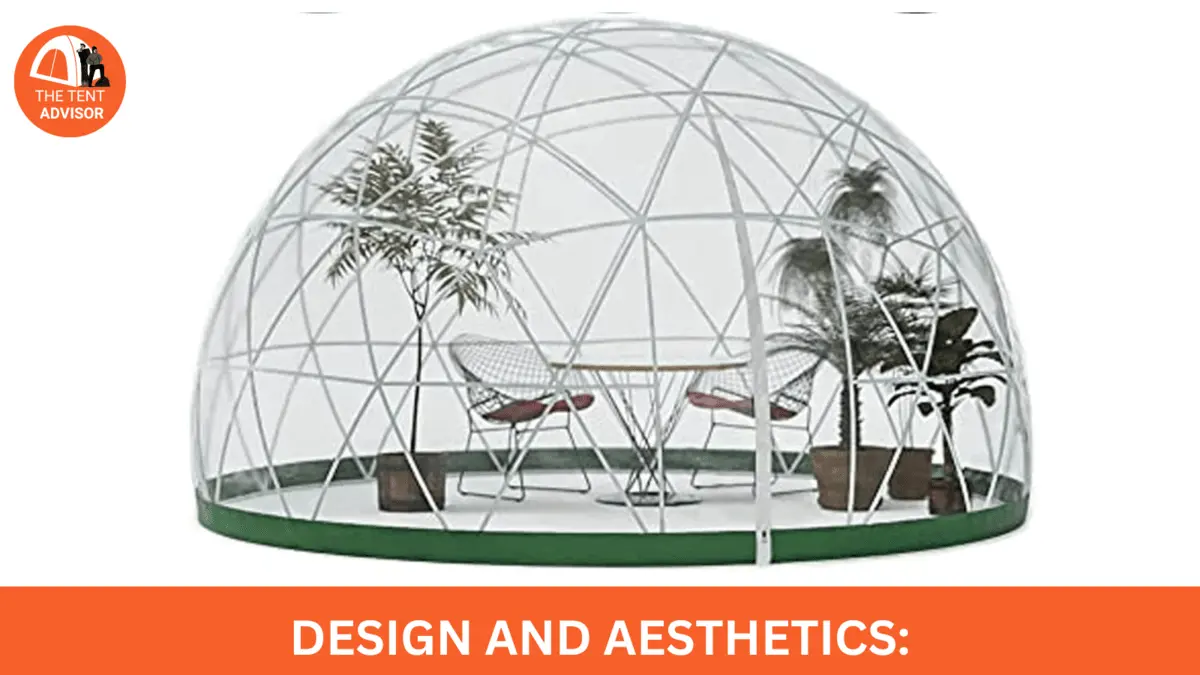
There are specially designed geodesic dome-shaped tents that mainly promote glamping due to their design and aesthetic appeal. Offering seasonal views and additional aesthetic appeal to the luxury experience.
All-Season Use:
Many glamping dome tents have soft and warm insides that can be used in all seasons. They have air conditioning systems, and this helps them to withstand different weather situations, which are hot summer and cold winter days.
Versatility:
Glamping domes might be included in the range of options for various kinds of investments, including high-end ‘camping’ areas, home private retreats, parties, and even business offshore events such as team building or annual meetings. It is made in such a manner that it can accommodate various purposes in various surroundings.
Additional Uses

However, dome tents come in handy for practical uses other than just camping and glamping.
Event Spaces:
Dome tents are frequently used for events such as festivals, fairs, and other occasions held outside due to their large space and other unusual features.
Temporary Shelters:
They are also used as temporary accommodation centers, in building sites, and in other temporary situations for those who need a shelter that is strong and can be set up in less time.
Greenhouses:
Agricultural dome tents can also be used as greenhouses for plants, especially where the atmosphere and light have to be regulated for optimal growth.
Dome tents are very flexible and have many applications apart from just camping. This is a growing trend in the yurt era, and these structures are thus used in glamping, which represents a fusion of modern comforts and outdoor activities that also cater to the rising structure in the outdoor hospitality market.
When to Use a Dome Tent
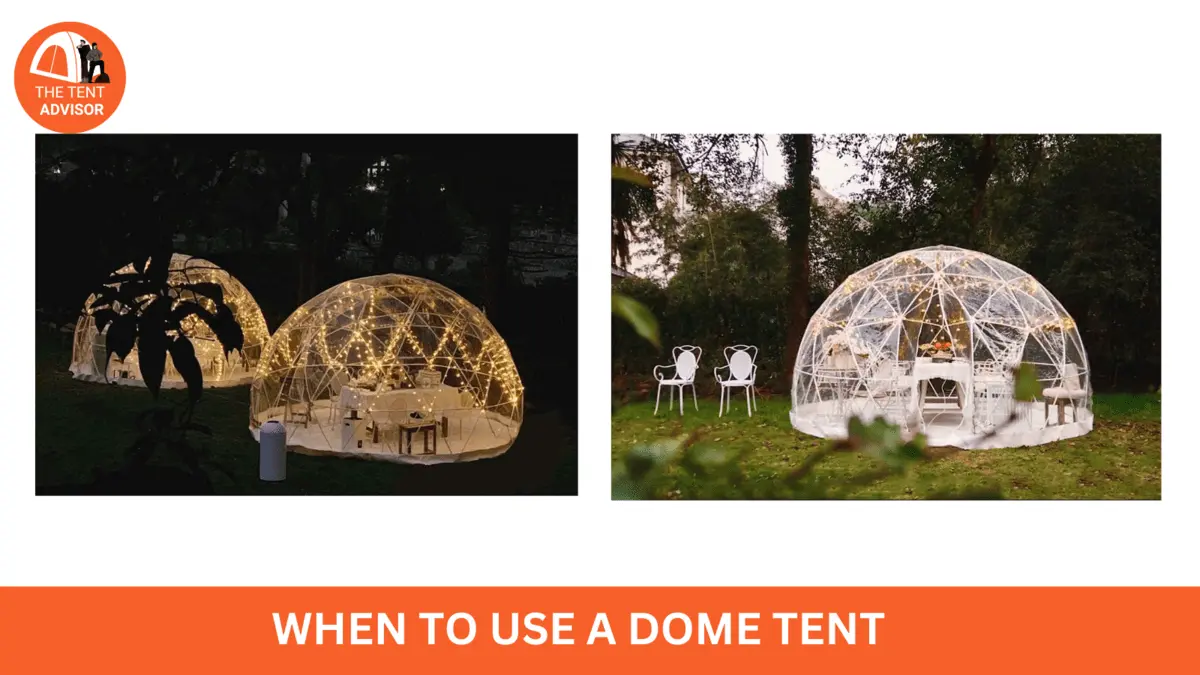
Given their distinctive attributes, dome tents are highly adaptable and fit into almost any form of camping. Here’s when a dome tent is ideal:
Family Camping Trips
Dome tents are very convenient for family camping because they are easy to put up. The structure is plain and does not involve time-consuming struggles with poles, making it easier and faster for one to pitch their tent. This comes in very handy, especially when getting annoying kids ready to go, as they are impatient to begin the fun. Moreover, dome tents can also be a great way for kids to learn to pitch a tent because the design is just that simple.
Solo and Duo Camping
Moving around with an overly packed substantial load is not fun for a solo traveler or a couple, and in this case, dome tents come in handy. Even one or two people can manage to carry along and pitch up dome tents. People who would rather have it don’t want the trouble of pitching the tent, and dome tents are perfect for such people.
Camping In Warm Climate
Dome tents have perfect ventilation and are quite comfortable for warm-weather camping. The use of mesh panels ensures that the temperatures inside will be bearable, as the tent will have suitable air circulation. Dome tents work perfectly in spring or even fall because they are warm without being too hot for those milder seasons.
A Lightweight Tent for Fast Packing
Dome tents are also preferred when carrying lightweight loads because they are appropriately designed with sheltering materials. Their fewer features and quick pitch make them ideal for hikers who want to have their tent while only adding a little weight to their backs.
dome tents are flexible and uncomplicated structures that are adequate for an array of camping activities. Whether you are going with children, alone, or in finer weather, you can use a dome tent, which is quite sociable and easy to use.
For more information on camping tents types visit our guide
Core Dome Tent Accessories
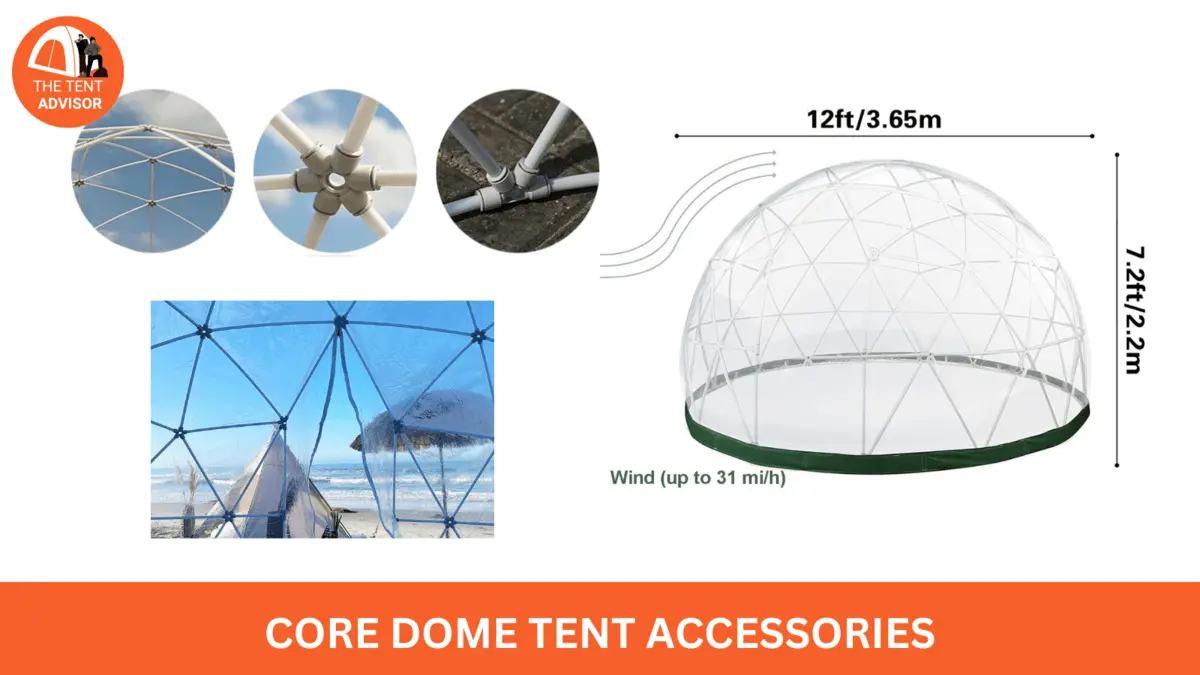
Dome tents are simple and easy to use, as is already known; however, a couple of accessories for dome tents are necessary to make the camping experience more comfortable. Here’s a list of accessories to round out the collection.
Ground Tarp
There is a lot of importance when it comes to the use of a ground tarp, especially under the dome tent, for it ensures the cleanliness of the tent and its health. As if this wasn’t enough, it also protects the tent from water and dirt while it’s spread on the ground while camping. This especially comes in handy when tents are pitched on moist or irregular terrain.
Rain Fly
The tent rain fly is the most important thing, and it is huddled for the shelter’s integrity. This additional sheet is sewn and fastened to the external assembly of your tent and drains down all sides, including the roof, which is used mostly in places where there is heavy downpour, preventing the tint from leaking. This way, although the weather forecaster may have announced that the weather will be clear and thus no one has any reasons to expect rains, it will still be okay to have a fly attached.
Mallet Dome tents
usually come with stakes and guy lines, but a mallet is useful in making sure all the stakes that are dispensed are securely secured into the ground. More importantly, a mallet assists you in firmly pitching your tent, which is especially crucial in soft or stony soil.
Room Dividers (Optional)
Room dividers may prove useful for families or small groups. They create additional compartments inside the tent that are functional and enhance the organization of the tent situation. Room dividers of various dimensions are available and can be resized to fit your particular needs.
Dome Tents and Other Options Drawbacks
Despite the many advantages of dome tents, there are still a few disadvantages. Knowing these factors can help you determine if a dome tent is suitable for your camping needs.
Less Usable Area
Dome tents are usually structured in a spherical shape as the masons construct domes upstairs and quite high in these dome houses, so they tend to feel a bit discomforting, mostly if workers intend to stay for long periods or if they camped in a very large group. If this is your concern, go for a cabin tent. Cabin tents have the disadvantages of vertical walls and rectangular shapes, but they offer more space and comfort.
Seasonal Restrictions
Sizes of dome tents could be used within a period of three seasons. This is not the best for winter-season camping since it does not have enough warmth for the cold months. For those who plan to go camping in winter or very harsh conditions, thick canvas in the tent for warmth to more thickness is provided. These tents are also suitable for extreme climatic conditions, windproof and moisture resistant, and may even allow for a tent stove for warmth.
For more information on camping tents accessories visit our guides
What is the Use of a Dome Tent?- All in all
Dome tents are highly recommended to those who wish to take comfort in both relaxation and exploration. The shape aesthetically provides not only enough room and high ceilings but also numerous additional features you will find inside the structure that can make your camping experience even better.
Be it a family camping adventure with glamping, a lovely couples’ retreat, or a few breathtaking nights outdoors; the contemporary dome tents do it all in a bed of style and comfort. With enough room for possibilities, such as adding beds, seating, or even private decks, dome tents offer a modern-day camper with a perfect camp in luxury. Well, defy nature by running into one of those conventional dome tents and head out, except that, in this case, it will be outside and away from all the comforts of home.
FAQ: What is the Use of a Dome Tent?
What is a dome tent?
Dome tents are tents with curved or semi-round tops. This structure is made by using two poles, which form the semi-circles or the crisscrossing-shaped tent. Its setup is remembered for being fast and hassle-free and enables users to have ample space and stability in the structure.
Who invented the dome tent?
The modern dome tent has undergone changes owing to architect and inventor Buckminster Fuller. Fuller’s revolution in tent design has often been attributed to the geodesic dome, a method of rendering three-dimensional space that divides the spherical surface into an interconnected mass of triangles.
What type of a tent is a dome?
A dome tent can be defined by its unique structural configuration, which is two poles crossing at a point to each create half semi-circles across the shape and exterior fabric of the tent. It is highly recognizable owing to how its shape has been stylized or designed since most dome shapes are not regarded as basic rigid shapes with enough floor space within. Dome tents are also fun to use and come in different designs where two to eight people can comfortably sleep inside.
When someone says a dome, what does it refer to?
It is a continual surface outward as it is split in two, showing half of a sphere’s frame. To help you with understanding, if you pick up an orange, slice it at the equator and rest it upside down on the table. Though this dome-shaped structure is common, it is not the case when looking at naturally occurring domes.
Is there the introduction of a dome?
The earliest history of a domed structure is built between 19280 and 116700 BC. In Ukraine, in the Ukrainian cave of Mezhirich, mammoth tusk, and bone huts, which are iconographic mounds, are some of the known rings of dome architecture construction.
For for information on camping tents check out these guides
Resources:
https://www.econstor.eu/handle/10419/225520
https://dictionary.cambridge.org/dictionary/english/dome-tent
